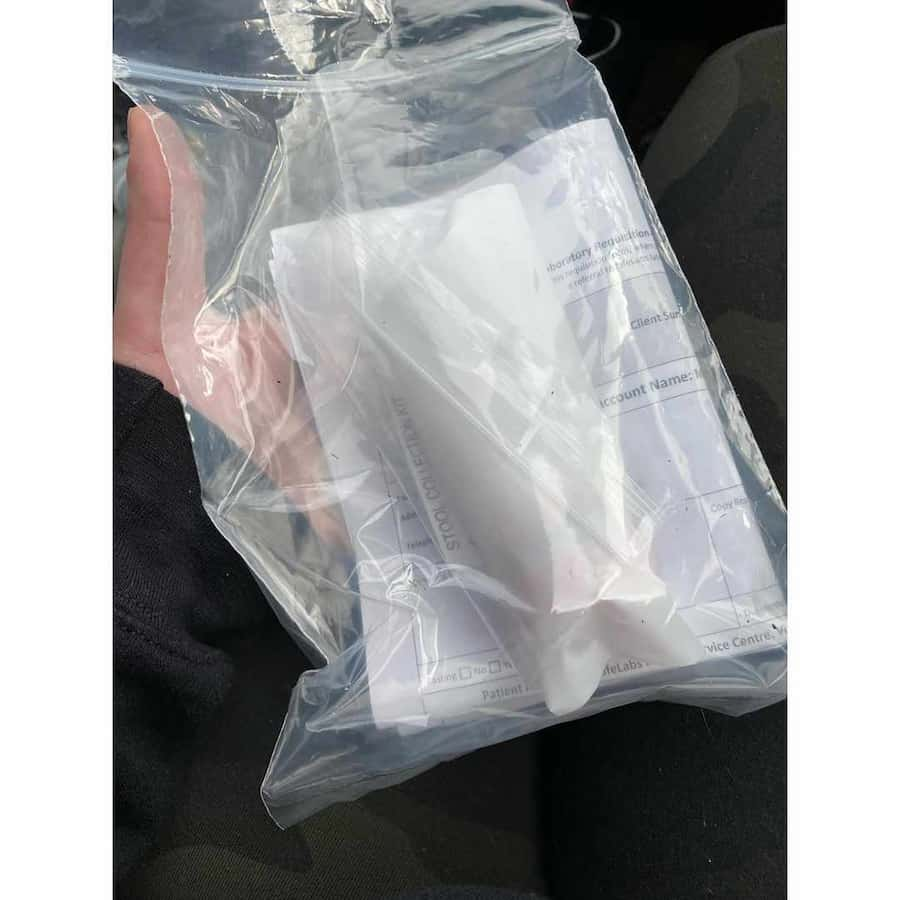Content :
◉ What is calprotectin test?
Calprotectin is essentially a protein that white blood cells release when they rush to where inflammation is occurring in your intestines. A higher concentration of calprotectin in the stool indicates more pronounced inflammation.
The fecal calprotectin test is a non-invasive stool test that detects and measures inflammation in the intestines. This can help distinguish inflammatory bowel disease (IBD) from non-inflammatory conditions like irritable bowel syndrome (IBS).
- The normal level is generally less than 50 μg/g.
- The limit values are 50 to 120 μg/g.
- Levels above 120 μg/g indicate significant inflammation.
The test is particularly useful for monitoring disease activity and severity in patients already diagnosed with IBD.

◉ When the Calprotectin Test is Used
Doctors may order a calprotectin test when:
- A patient has gastrointestinal symptoms and they want to determine if an endoscopy is necessary. Elevated calprotectin levels indicate inflammation that warrants further testing like a colonoscopy.
- A patient with known IBD is having a flare-up. The test helps confirm disease activity and assess the severity of inflammation. Repeated calprotectin testing can monitor disease progression.
- To differentiate between IBD and IBS. Calprotectin levels are usually normal in IBS patients.
- To screen for intestinal inflammation that may indicate Crohn's disease or ulcerative colitis.
- To monitor response to IBD treatment. Decreasing calprotectin levels indicate successful treatment.
◉ How the Calprotectin Test Works
Calprotectin is a protein released by neutrophils, a type of white blood cell. When there is inflammation in the intestines, neutrophils migrate to the site and release calprotectin.
Higher calprotectin levels in stool correspond to more neutrophil activity and inflammation. The test detects and quantifies the amount of calprotectin in a stool sample.
◉ Collecting a Stool Sample
Patients collect a stool sample at home following these steps:
- Label the collection container with name, date of birth, date/time of collection.
- Pass stool directly onto provided cling film covering the toilet bowl. This prevents contamination from toilet water.
- Use the attached spatula to transfer a large pea-sized amount into the container. Avoid areas with blood, mucus, or undigested food.
- Fill the container about one-quarter full if possible. The minimum needed is a large pea-sized amount.
- Refrigerate and return sample to doctor's office within 24 hours.
◉ Causes of elevated fecal calprotectin levels
- Inflammatory bowel disease: Crohn's disease and ulcerative colitis.
- Autoimmune enteropathy.
- Infections: Helicobacter pylori gastritis, viral, bacterial or parasitic gastroenteritis
- Certain tumors: Colorectal cancer, gastric carcinoma, colonic and gastric polyps
- Certain medications: Proton pump inhibitors (PPIs), NSAIDs.
- Others: Cirrhosis, cystic fibrosis, gastroesophageal reflux, peptic ulcer.
◉ Understanding the Calprotectin Test Results
Results are reported as micrograms of calprotectin per gram of stool (μg/g).
◉ Normal fecal calprotectin level
A value less than 50 μg/g is normal and does not suggest any significant intestinal inflammation. Symptoms may be due to any cause.
◉ Limit rate
A value between 50-120 μg/g may warrant additional tests, such as endoscopy, to look for early IBD. It is recommended to repeat the calprotectin test.
◉ High level of calprotectin
A level greater than 120 μg/g of fecal calprotectin indicates active inflammation due to IBD, infection or colorectal cancer. Follow-up colonoscopy recommended.
For IBD monitoring, calprotectin levels generally correlate with disease severity:
- <250 μg/g = remission
- 250-600 μg/g = mild to moderate inflammation
- >600 μg/g = severe inflammation
Decreasing calprotectin on repeat tests indicates successful IBD treatment and mucosal healing.
◉ Advantages of the Calprotectin Test
Key benefits of the fecal calprotectin test:
- Noninvasive: No preparation required compared to endoscopies.
- Sensitive marker of intestinal inflammation: Can detect inflammation before it's visible on endoscopy.
- Useful for monitoring IBD activity: Correlates with disease severity.
- Helps determine who needs endoscopy: Avoids unnecessary invasive procedures.
◉ Limitations of the Calprotectin Test
- Not diagnostic - calprotectin elevation indicates inflammation but not the specific cause.
- False positives possible in certain situations like NSAID use or viral gastroenteritis.
- False negatives possible in localized IBD inflammation.
- Requires baseline and periodic testing to monitor disease trends.
◉ Conclusion
The calprotectin stool test is a simple, noninvasive way to detect intestinal inflammation. It has an important role in determining which patients warrant further endoscopic testing. For known IBD patients, regular calprotectin monitoring provides useful insight on disease activity and response to treatment.
When interpreted in clinical context, the fecal calprotectin test provides valuable information to optimize IBD patient care.